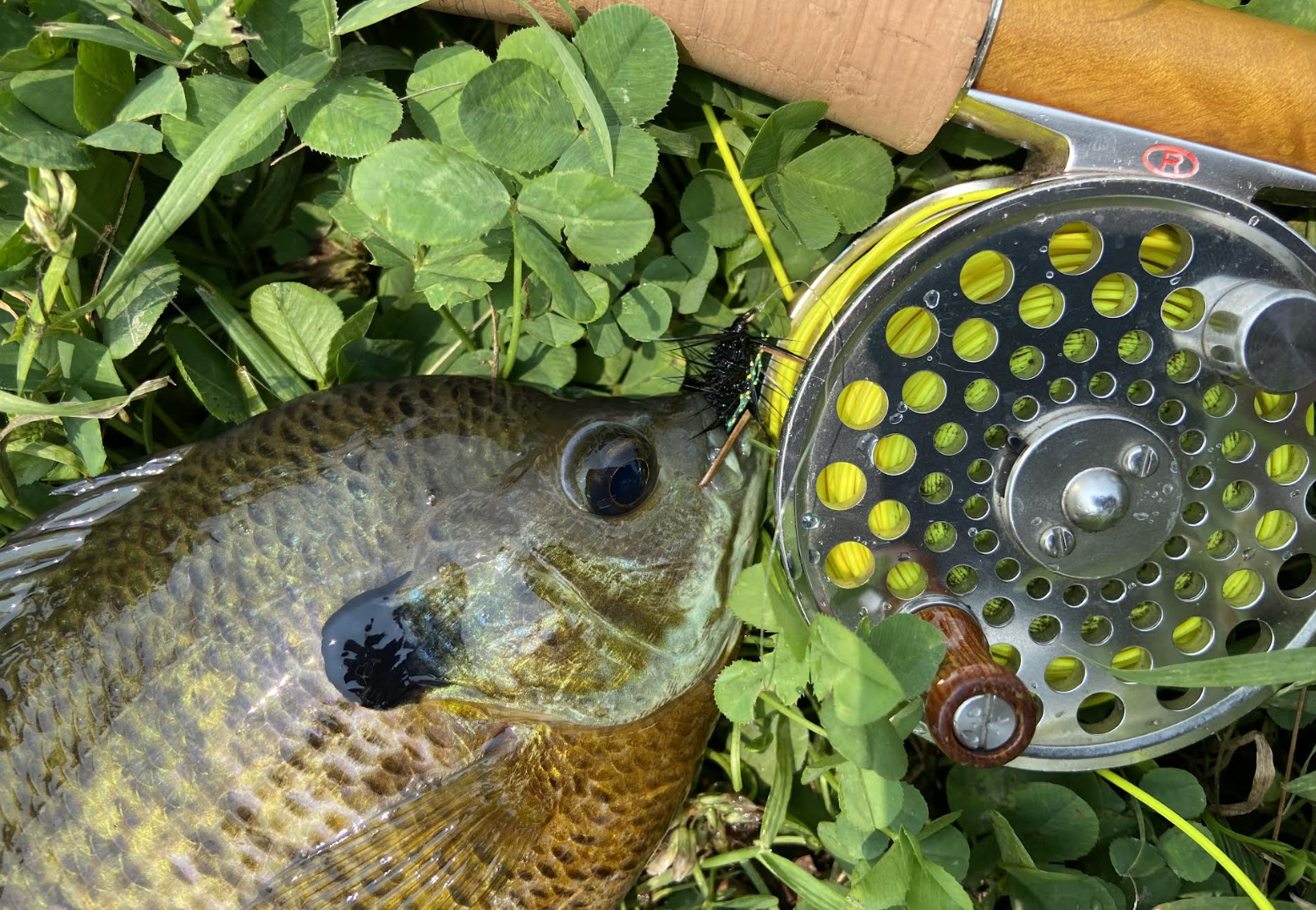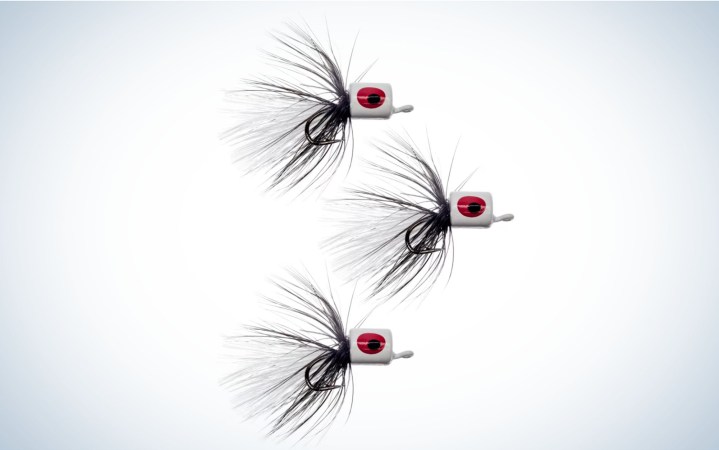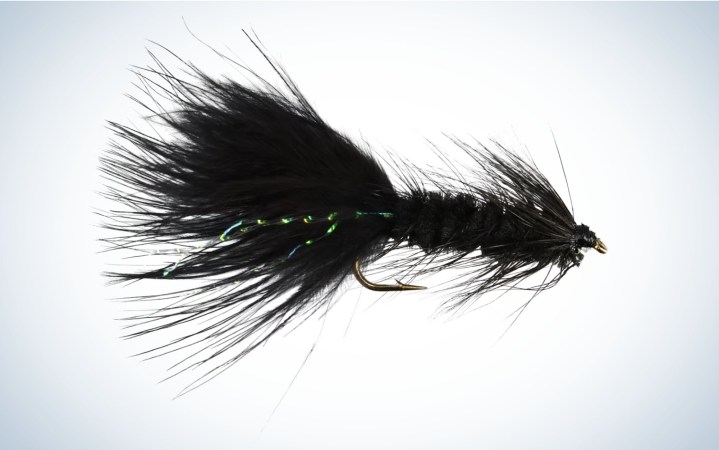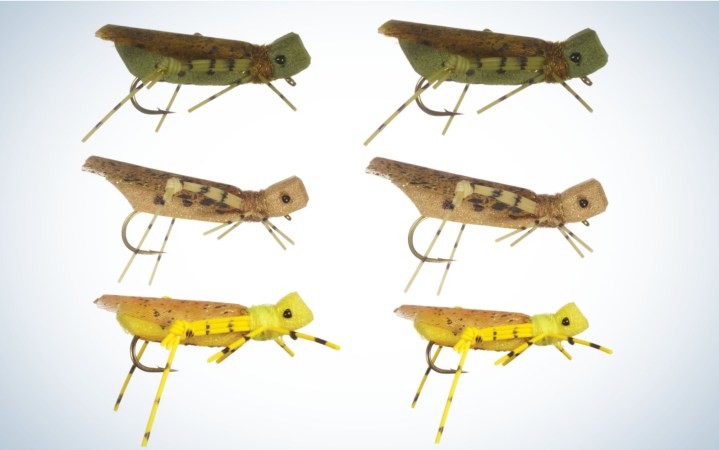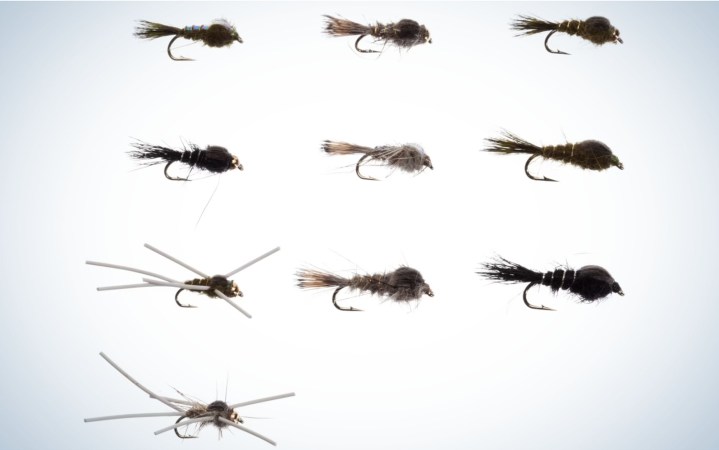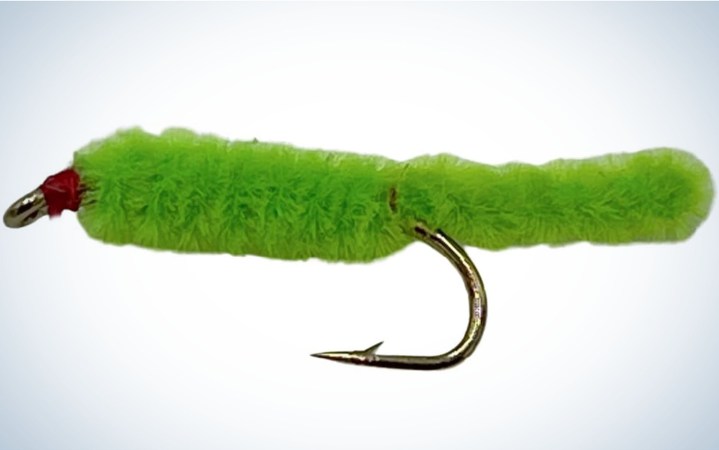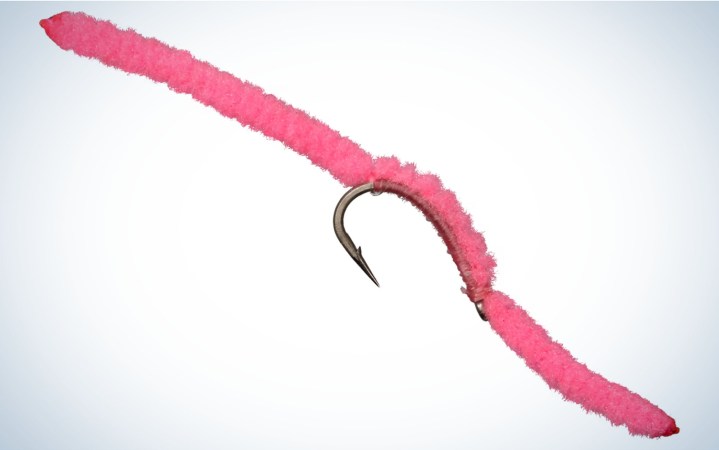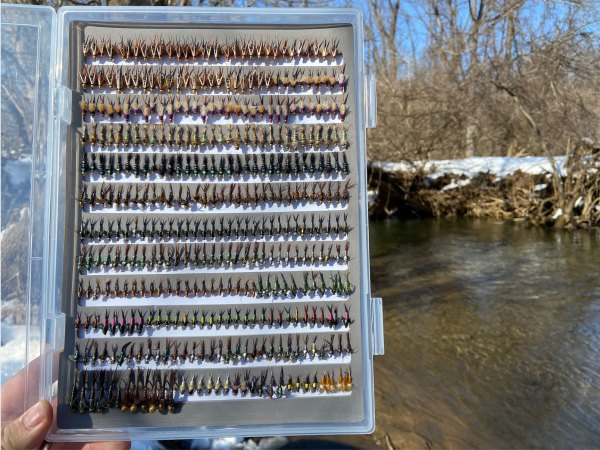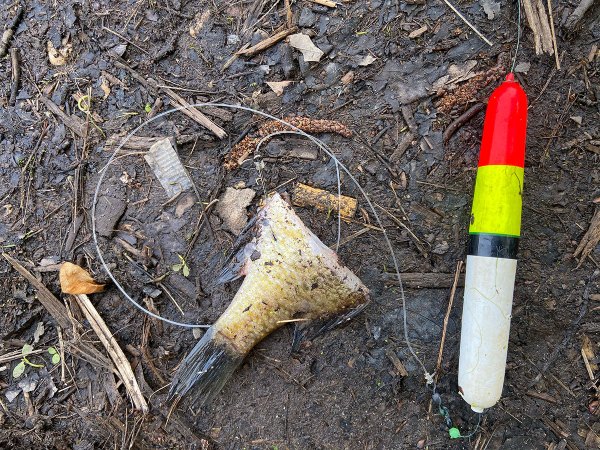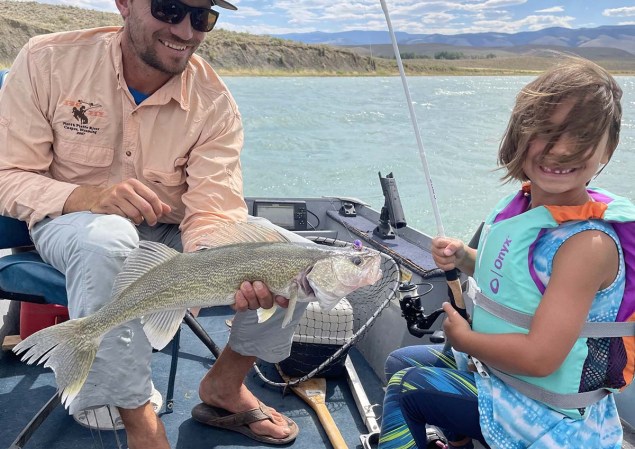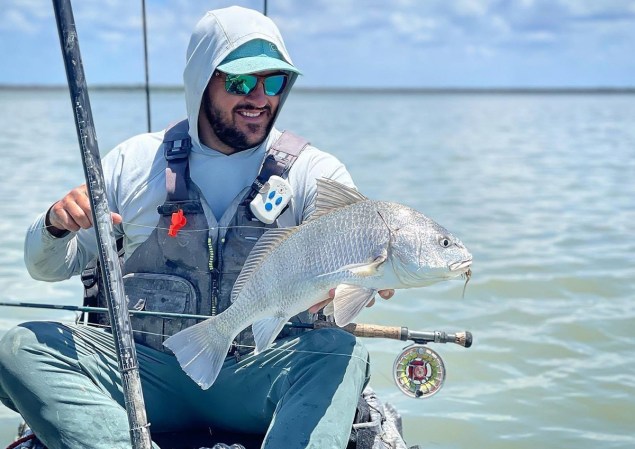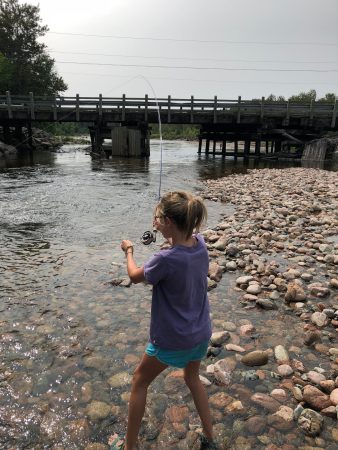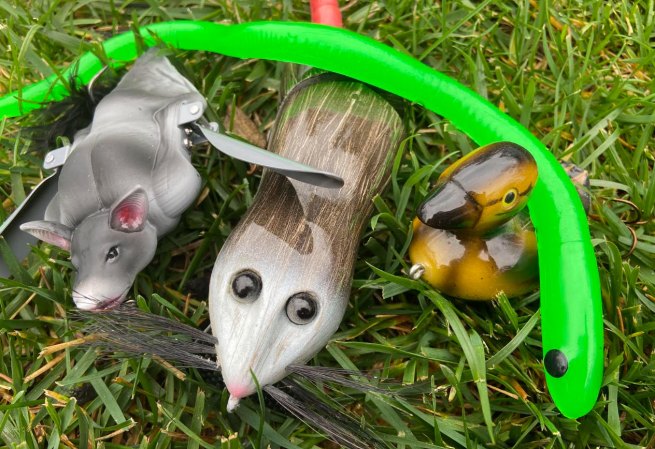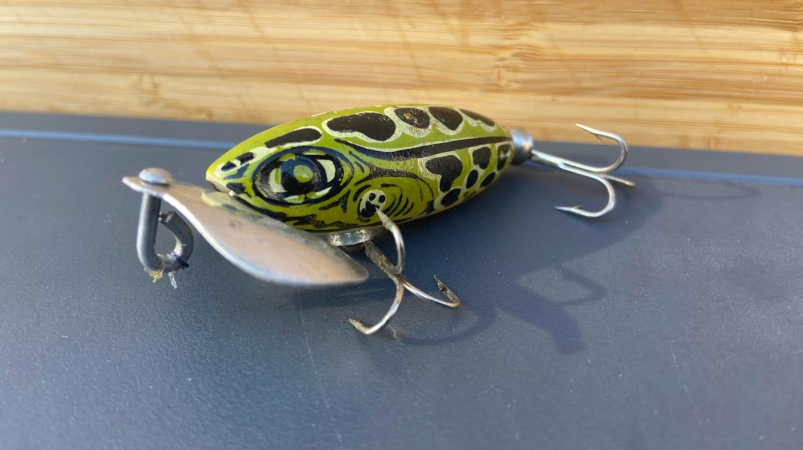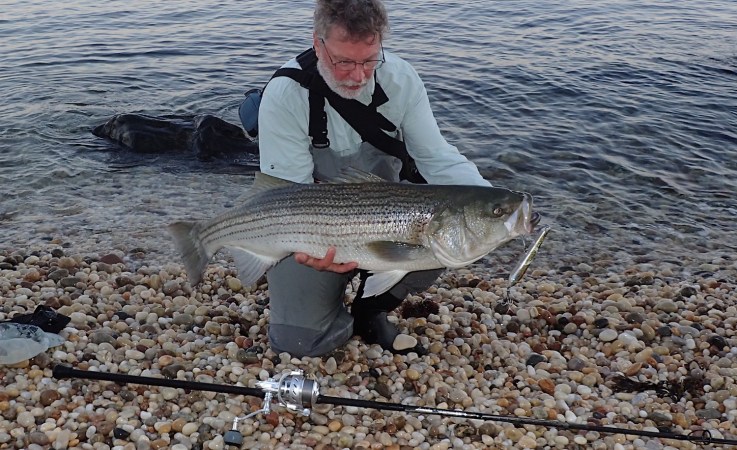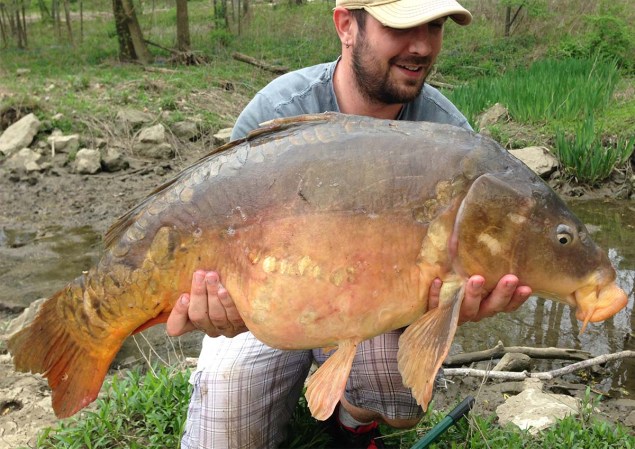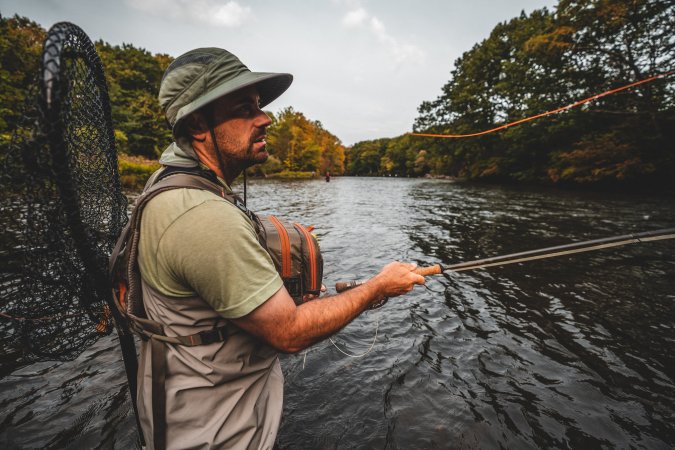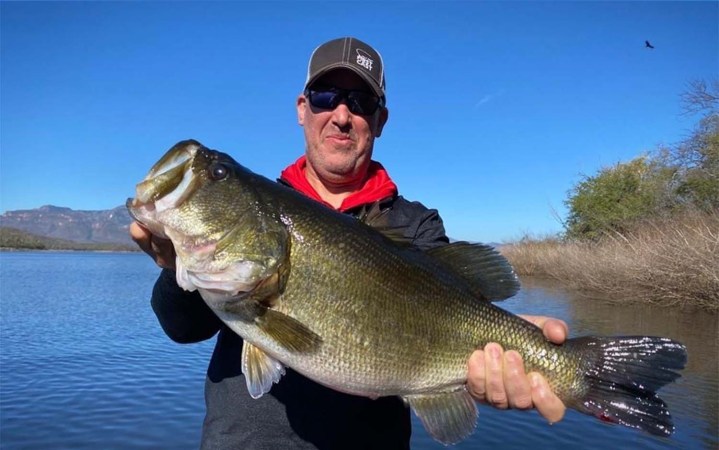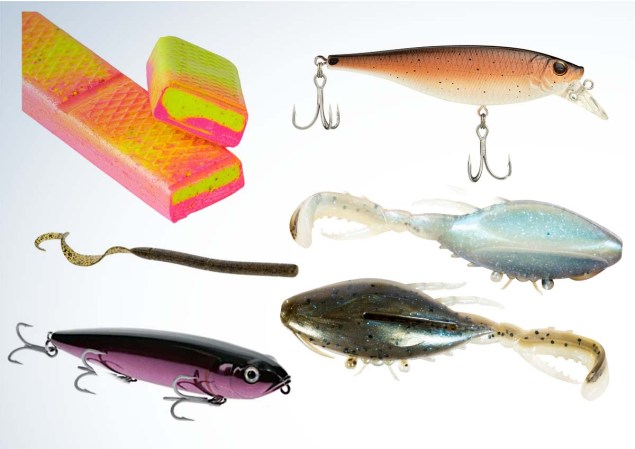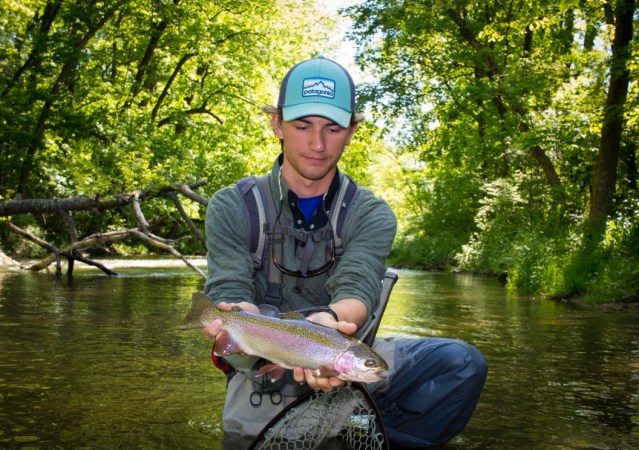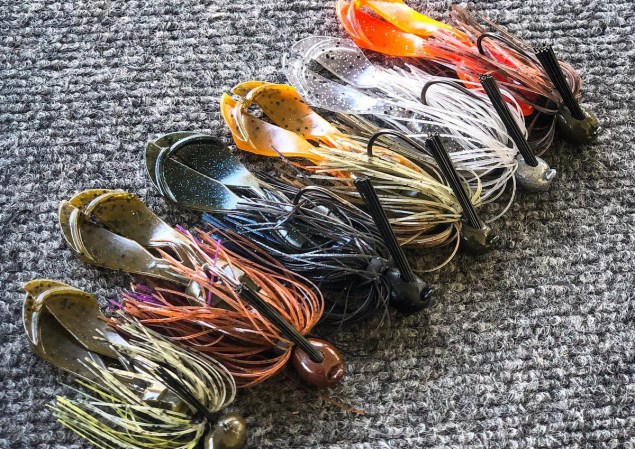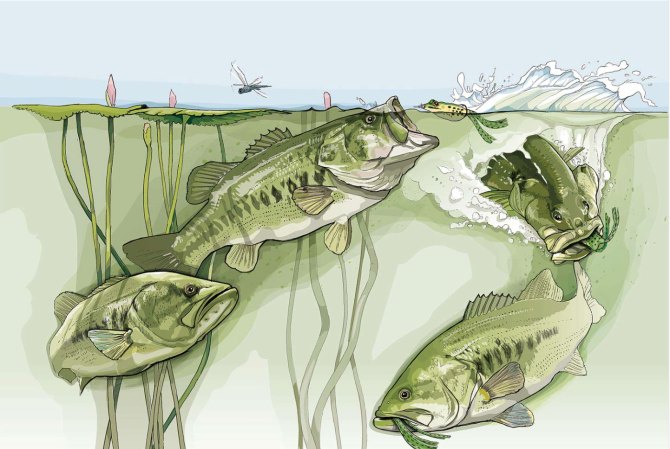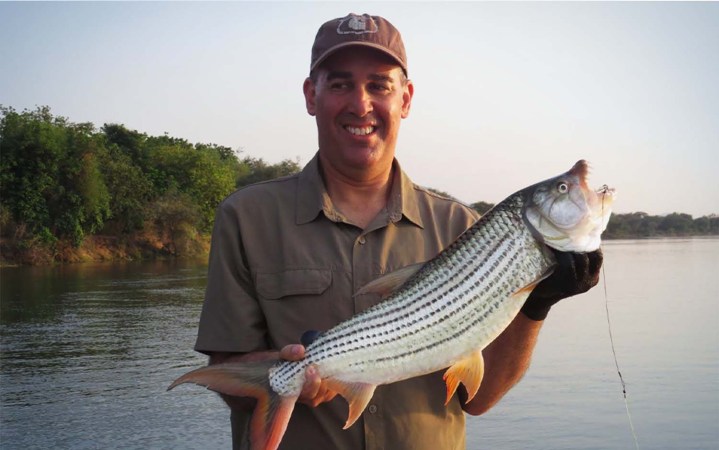We may earn revenue from the products available on this page and participate in affiliate programs. Learn More ›
Fly fishing is synonymous with trout. When most people think about fly fishing, they conjure images of mountain streams and fish sipping mayflies and caddisflies off the surface. It’s true that the origins of fly fishing are squarely rooted in the trout scene, but the sport has grown well beyond brooks, browns, and rainbows. These days, muskies, myriad saltwater species, bass, and even carp are pursued with fly rods. Panfish, however, don’t rank very high on the list of fly rod targets, which is a shame because they have a lot to offer. In fact fly fishing for bluegills is one of my go-to summer missions.
Bluegills are loads of fun on the fly. They’re available in almost every nook and cranny of the U.S., and unlike other species, they require minimal fly fishing skills to pursue successfully. Many of us owe bluegills for sparking our love of fishing, considering how eager they are to snatch a worm under a bobber. But they’re also the perfect target for people looking to get into fly fishing, especially kids. They’re the first fish I caught on the fly, and even though I’ve caught countless other species—many of them far bigger and more powerful—I still enjoy getting back to my roots during the summer and chasing bluegills with the long rod.
What many folks don’t realize is that while it may not take a lot of skill to get a bluegill to eat, all the practice you get casting, retrieving, and presenting patterns to these willing takers only hones your fly skills for other species. Because of the time I’ve spent chasing bluegills, I’m more proficient at detecting subtle subsurface strikes from trout and I understand the benefit of working surface flies gently for species like smallmouth bass. No matter how long you’ve been fly fishing, I encourage you to make a dedicated bluegill mission or two this summer. To help get you on the right track, here’s a breakdown of my favorite gear, flies, and locations for fly fishing for bluegills—and big ones at that.
Gearing Up For Bluegills On The Fly
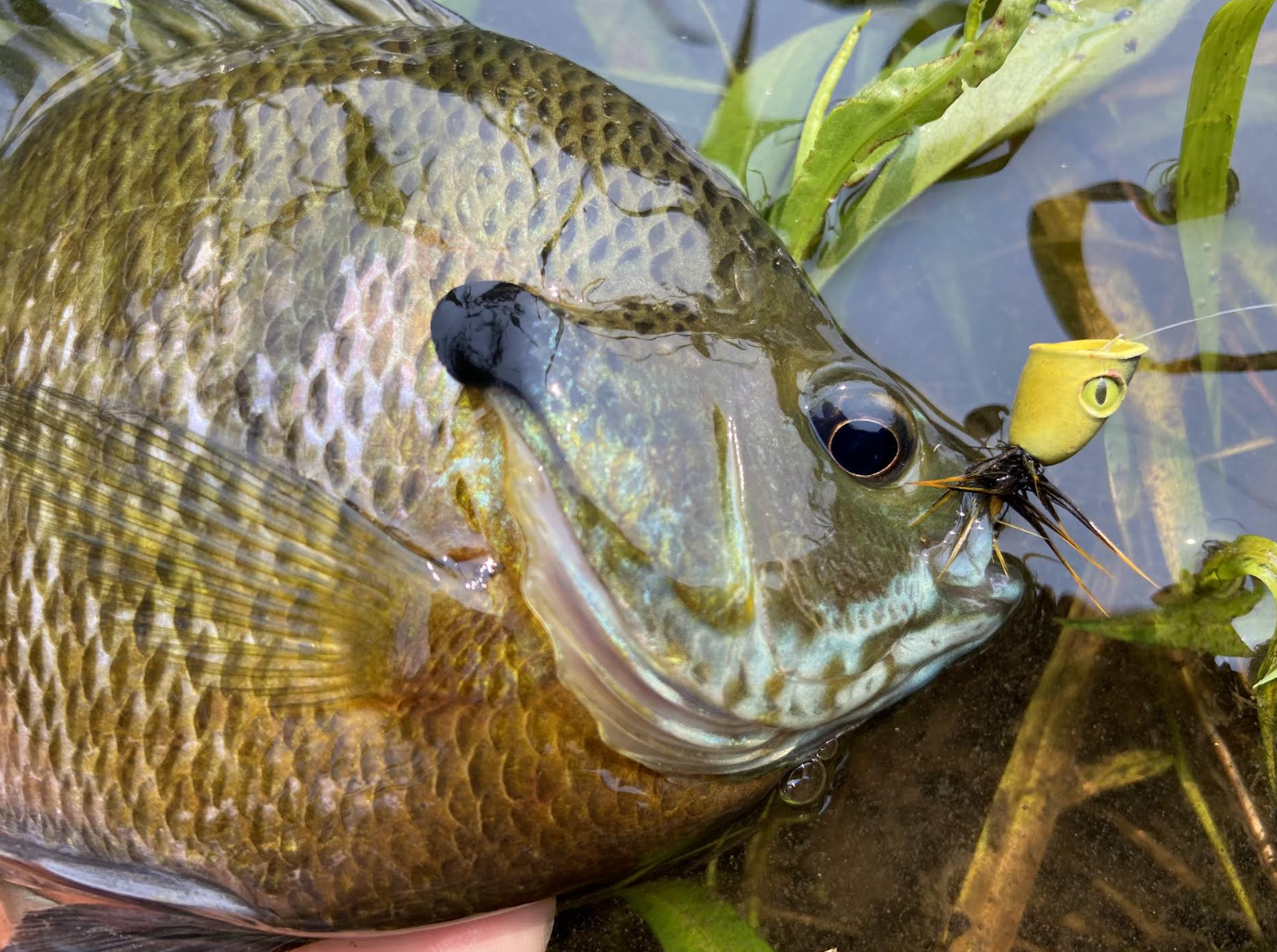
Bluegills are scrappy. Larger ones especially fight very hard, which makes bluegill fishing fun. It’s just that most of the time we target them with rods that are a bit overpowering. To maximize your enjoyment, it’s worth investing in an ultra-light fly rod. Though a standard 9-foot, 5-weight rod that you’d use for trout would certainly get the job done, my favorite rod for bluegills is a 6- to 7-foot 3-weight rod built on a fiberglass blank. Bluegills don’t usually require making long casts, so you can get away with a short rod. Likewise, if you target these fish on creeks with a lot of overhanging limbs, a shorter rod offers an advantage when casting to tight areas or when back cast room is limited. While a graphite rod in the same weight would work perfectly fine, a fiberglass rod does two useful things.
First, fiberglass is softer than graphite. Put simply, it has more flex. Although some anglers believe this slower action is better for giant fish like tarpon and redfish, I disagree. I love it, however, when casting air-resistant flies like panfish poppers, because the flexibility of glass provides a little extra whip to turn them over. Meanwhile, when you hook into a nice bluegill, the softness of the fiberglass can make a 1/4-pound fish feel like a 5 pounder, and that’s just plain fun.
READ NEXT: The Best Fly Fishing Rods for Beginners
You’ll want a standard weight-forward floating 3-weight line, and as for a reel, think “cheap.” A bluegill is never going to engage the drag, and most of the time you’re going to wind up stripping the fish in by hand and never actually using the reel. It’s essentially a line holder, so a no-frills classic click-and-pawl style fly reel is perfect. Grab a few tapered leaders and spools of tippet in sizes 5X and 4X and you’re ready to fish.
Top Flies for Summer Bluegills
The beauty of fly fishing for bluegills is that fly selection isn’t very complicated. Considering that pretty much any bluegill will sip a cricket, slurp a bit of worm, or nip a tiny ball of white bread, you can get away with a handful of patterns regardless of where you’re fishing. From farm ponds to meandering country streams, you can’t go wrong with these six patterns during the dog days.
Panfish Popper
Panfish Popper
Panfish poppers are not always the most effective pattern you can throw at bluegills, but if the fish are in the mood to eat poppers, they’re the most fun. These tiny foam and balsa wood versions of big bass poppers represent a wide variety of bugs, and when their hard bodies touch down, the plop they make gets the attention of any bluegills in the area quickly, especially in the dog days when there are lots of dragonflies buzzing about. Most of the time, if the fish are willing to eat off the surface, you won’t have to do anything after splashdown. The fish will race over and suck the fly under. But if they need a little coaxing, a slight shake of the line will make the popper look like a struggling insect, while a harder strip will make the tiny fly chug and spit a little water.
Micro Wooly Bugger
Micro Wooly Bugger
Wooly Buggers are one of the most potent flies ever created for a wide variety of freshwater fish. This includes bluegills, but given their small mouths, you’ll want to use a size 12 or smaller Bugger. In black this fly can represent a leech or cricket. In brown it’s a tiny crayfish. Tie on a white Bugger and you’ve got a baitfish imitation. Buggers have weighted cores, so they’ll sink quickly. After they hit the water, impart short strips and pause for a few seconds between them. Bluegills often vacuum a Wooly Bugger as it’s falling but a Bugger in motion is what grabs their attention.
Grasshopper
Grasshopper
Grasshoppers are available in a wide range of colors and materials, and they also double nicely as crickets, which bluegills love. Whether they’re crafted with foam bodies, spun hair bodies, or wool bodies, all grasshopper flies are intended to float on the surface and bluegills are more than happy to eat them as they bob around. However, a sneaky trick when using these patterns is to add a small split shot about a foot up your leader from the fly. This will cause the hopper to sink very slowly, and a “drowned” hopper or cricket sometimes gets eaten faster than one on the surface. After the cast keep a sharp eye on the end of your fly line and if you see it tick or twitch, set the hook.
Hare’s Ear
The Hare’s Ear is a nymph pattern designed to be fished below the surface. In the trout game these generic flies represent everything from emerging caddis to stoneflies. Theoretically they match all the same things in the bluegill game, though it’s fair to say bluegills are a lot less discerning than trout. To bluegills, a Hare’s Ear just looks like food. It could be a beetle, a micro crayfish, freshwater shrimp, or even a bit of garden worm; the bottom line is that they’ll eat them with gusto. You can cast a Hare’s Ear by itself and watch for ticks in your line, however, they are often more effective fished under a very light strike indicator. The indicator will draw the fishes’ attention when it hits the surface, and they’ll hammer the Hare’s Ear dangling below, If you’re not getting bites fast, drag the indicator a few feet and let the nymph settle back down. Sometimes this little burst of movement triggers noncommittal fish.
Green Weenie
Green Weenie
Is it an inchworm? Is it a caddis pupa? Anglers have debated what the Green Weenie is supposed to represent for decades, largely because they don’t want to admit that it doesn’t have to represent anything in order for fish to crush it. This simple neon green wormlike pattern is a bluegill destroyer. You can fish it below a strike indicator or simply let it fall on a slack line, but it works especially well stripped at a faster pace. Perhaps the bluegills believe it’s a small baitfish, but regardless of what they think, their brain is telling them to kill, kill, kill.
San Juan Worm
The funny thing about San Juan Worms is that you’d think they’d be the best bluegill fly ever made considering how eager these fish are to gobble a nightcrawler. The truth, however, is that they’re best reserved for trophy bluegill missions. Whereas a trout with a larger mouth will inhale a San Juan in one shot, tiny bluegills will simply grab the ends, quickly realize that it’s not a real worm, and let go before ever getting near the hook. If, on the other hand, you cast a San Juan into a bluegill zone and it gets sucked down in its entirety, it’s likely to be a much larger bluegill. I prefer to fish my worms under a strike indicator, and what I’ll often do is tie one on after I’ve already caught a bunch of fish on other flies. Unless the indictor goes down and stays down, I won’t even set the hook. Every once in a while, this tactic results in a bluegill or two that are bigger than my hand.
Where to Target Bluegills on the Fly
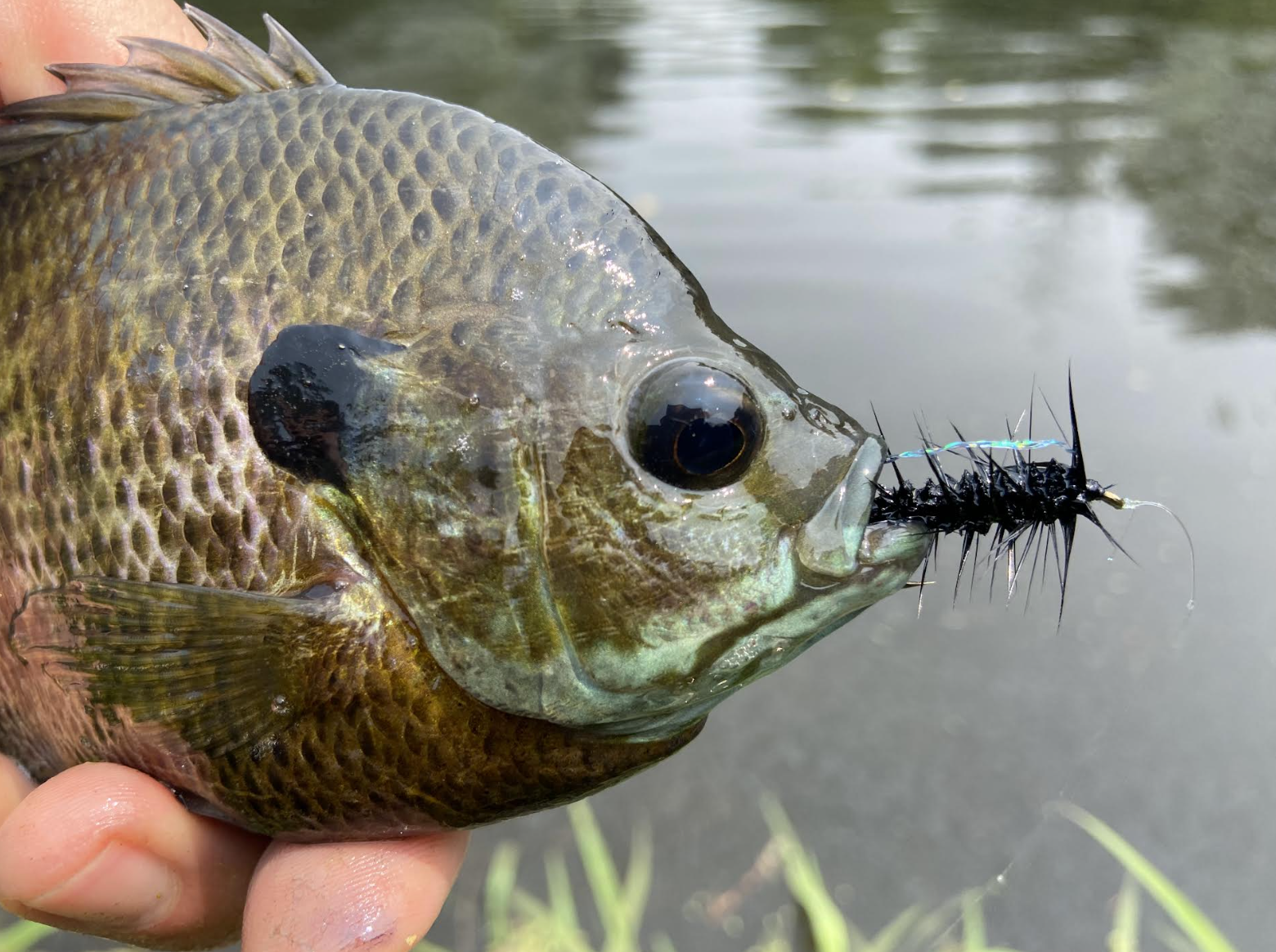
If you’re used to chasing bluegills with a bobber and garden worms, it often seems like no matter where you cast, that bobber disappears in a jiffy. Given that flies don’t have the added element of scent to lure the fish, however, it’s important to be a bit more tactical about where you cast your flies. This is especially the case if you want to catch bigger-than-average bluegills. So, take note of these locations—as well as the times you should focus on fishing them.
Shallow Flats
Small bluegills will hang out in shallow water all day all summer, but the big fish are often more selective about when they slide up skinny. Barring bedding season in the early summer when large fish guard nests in the shallows, bigger fish will hang out in deeper, cooler water most of the time. But they know the prospects of finding bugs or baitfish are better on the flats. Focus on these areas at dawn and dusk, as the water will be slightly cooler, and the bigger fish will feel more comfortable in the low light conditions.
Docks
In the heat of summer, large bluegills love to hang in the cool shade below docks. Ideally, you’ll be in a position to cast at the dock instead of from the dock. This might mean wading near the dock or leaning on a canoe or kayak. The objective is to send a fly under the dock and into the shadow. A Wooly Bugger is particularly effective in this scenario, as it’ll sink quickly and flutter on the fall, often drawing an instant reaction strike from monster bluegills.
Laydowns
Bluegills inhabit moving waters all over the country. However, they gravitate to areas where the current is minimal. On streams and creeks, wood laydowns are prime locations to find oversized ’gills, as the branches attract baitfish and other forage, and the structure creates a soft spot on the downstream side of the laydown.
Grass Edges
Any time there is a flooded bank edge on a lake, pond, or stream, it’s often a bluegill magnet. The fish know that the flooded grass provides cover for baitfish and tadpoles, and that it’s a likely place to find an ant or beetle that fell into the drink. If the water just off the bank is deeper, these flooded edges can produce all day; if it’s shallow, fish these areas during low light periods. If possible, make a longer cast parallel to the grass and work your fly back as tight to the edge as possible.
READ NEXT: Sunfish vs Bluegill
Deep Weed Beds
Nothing is more attractive to summertime bluegills than deeper water—approximately 3 to 8 feet—loaded with aquatic vegetation. If you’re fishing on foot, you can find this in slower sections of moving water, or potentially within casting distance in a lake cove or pond, however, having a small watercraft is beneficial here. Depth and cover provide bluegills with everything they need all summer long, so at any time of day, you’ll find fish willing to bite in these areas. The trick is gauging just how much distance there is between the tops of the weeds and the surface so you can suspend your fly in that zone without getting hung up. Once you dial it in, you’ll be tight to a gill on practically every cast.
Final Thoughts on Fly Fishing for Bluegills
It’s true that fly fishing for bluegills will help sharpen your overall fly fishing skills. But bluegills are also incredibly fun in their own right. During those magic windows when they’re feeding aggressively, they absolutely smash topwater bugs. Big bluegills fight hard, and hauling them out of sunken trees or thick vegetation on light tackle takes real skill. Plus, they’re among the best tasting freshwater fish. And somehow, bluegill fillets taste just a little bit better when you caught them on a fly rod.

